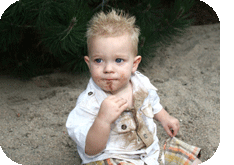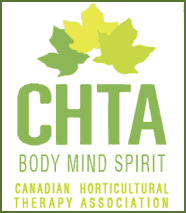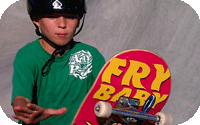|
|
Don't Spit That Out! Why a Little Dirt Might Not Hurt
Author: Chad Kennedy, Landscape Architect, ASLA
 Memories of my youth are filled with fun, dirt-rich experiences. Dirt was an integral part of my daily play routine. On many occasions, my youthful creativity and a gang of my neighborhood friends transformed seemingly useless dirt from backyards and undeveloped lots into BMX bike jumps, small caves and forts, exploding weed bombs, ineffective dams in trickling gutters, pick-up mud sports, hidden treasure quests and myriad muddy messes. I can honestly proclaim, without any shame, that I am no stranger to the taste of dirt and mud. Either by choice, by peer pressure or by involuntary methods, I have ingested, spit out, even breathed in my fair share of dirt and dust. Though the flavor and gritty texture have no place in my memory bank of pleasant experiences, I certainly believe I am better off having had those experiences. While I would never suggest that regular ingestion of soil is a good idea, there is research suggesting small amounts can be beneficial for developing children. Memories of my youth are filled with fun, dirt-rich experiences. Dirt was an integral part of my daily play routine. On many occasions, my youthful creativity and a gang of my neighborhood friends transformed seemingly useless dirt from backyards and undeveloped lots into BMX bike jumps, small caves and forts, exploding weed bombs, ineffective dams in trickling gutters, pick-up mud sports, hidden treasure quests and myriad muddy messes. I can honestly proclaim, without any shame, that I am no stranger to the taste of dirt and mud. Either by choice, by peer pressure or by involuntary methods, I have ingested, spit out, even breathed in my fair share of dirt and dust. Though the flavor and gritty texture have no place in my memory bank of pleasant experiences, I certainly believe I am better off having had those experiences. While I would never suggest that regular ingestion of soil is a good idea, there is research suggesting small amounts can be beneficial for developing children.
Children Eat Dirt: It is estimated that a normal child under three years old will consume up to 500 mg of soil a day.4 This doesn't infer that all children pick up soil directly from the ground and eat it, though this does happen frequently and a typical child between the ages of nine months old and two years old will ingest soil at least once while exploring and discovering the world. It is more likely, however, that children will ingest soil by eating unwashed vegetables, eating before washing their hands and by putting dirty objects into their mouths.4 All of these activities are normal and some would say necessary. Though widely disputed, some researchers believe that people eat soil as an innate function for regulating nutrient deficiencies within their bodies. A more widely accepted and documented reason, however, is described by the Hygiene Hypothesis.
The Hygiene Hypothesis: This hypothesis, in general terms, suggests that exposure to bacteria, viruses and pathogens (particularly during youth) bolster, improve and protect the immune system over time. Through exposure, the body is also given an opportunity to learn what warrants an immune system response and what does not.1 The Hygiene Hypothesis is supported by research and doctors across the globe and is evidenced in part by a study of 1,500 children performed in the Philippines. Researchers found that the greater level of pathogens children were exposed to in their first two years, the less inflammation was found in their blood.3 Other research shows that children who have contact with less than hygienic conditions (farming/ outdoors etc.) tend to have less issues with atopic disorders later in life.2
Interestingly, and a bit hard to fathom, the number of microbial cells that live on or in a human body greatly outnumber the actual body cell count. Some of these are detrimental to the body, others are beneficial and work in a symbiotic fashion. Some of these are actually necessary in our intestinal tract to help our bodies extract nutrition from the foods we eat. Nearly 80% of the microorganisms found in typical soils are genetically analogous to those found in the human intestinal track!2 Furthermore, children are not born with any of these microorganisms in their system and thus, must be exposed to them for proper development of intestinal functioning. This exposure can happen in three ways:
- through physical contact or inhalation (most likely though play and outdoor activity);
- through direct ingestion of soil (putting soil or other items in their mouths); or
- through artificial supplements or processed foods. 2
Studies related to the skin also show similar relationships with micro-organisms.3 As a result of these finding, researchers are starting to look at many pathogens differently, not just as microscopic attack vessels, but as symbiotic contributors to our bodies.
Keeping Them Safe: In reality the amount of bacteria found in typical soils is very large, but relatively harmless, and for the most part safe. There are exceptions to this rule as some soils may have contaminates, lead or high levels of feces. These are obviously not areas where children should be playing nor eating soil. The following are some suggestions for making sure children are safe while they play.
- Clean up any animal feces in the area prior to play activities.
- Choose appropriate play spaces for children.
- Know the history of the places they play. What was the area before it became a play space?
- If a child consistently ingests large amounts of soil, consult a physician.
Dr. Marc McMorris, a pediatric allergist at the University of Michigan Health System suggests that we, "Let kids be kids...It is a good idea to wash your hands and take appropriate precautions, but you don't need to isolate your children from the world."3 The research is pretty clear that, though the ingestion of soil isn't a pleasurable experience, it is hardly something to be overly concerned about and hypersensitive to. So maybe, just maybe, at the very least, it would be worth a second thought before bolting from the playground sidelines to wipe a mud ring from the mouth of a curious young toddler.
1.Brody, Jane E. Babies Know: A Little Dirt is Good for You. . The New York Times - Personal Health. January 26, 2009.
2.Sing, David and Charles F. Sing. Impact of Direct Soil Exposure from Airborne Dust and Geophagy on Human Health. International Journal of Environmental Research and Public Health. March, 2010. 7(3):1205-1223.
3.Stone, Gene. The Secrets of People Who Never Get Sick. Workman Publishing Company. New York, NY. 2010.
4.Viinikka, Tai. The Hazards and Benefits of Eating Dirt. www.aboutkidshealth.ca November 11, 2010.
|
|
|
|
 Memories of my youth are filled with fun, dirt-rich experiences. Dirt was an integral part of my daily play routine. On many occasions, my youthful creativity and a gang of my neighborhood friends transformed seemingly useless dirt from backyards and undeveloped lots into BMX bike jumps, small caves and forts, exploding weed bombs, ineffective dams in trickling gutters, pick-up mud sports, hidden treasure quests and myriad muddy messes. I can honestly proclaim, without any shame, that I am no stranger to the taste of dirt and mud. Either by choice, by peer pressure or by involuntary methods, I have ingested, spit out, even breathed in my fair share of dirt and dust. Though the flavor and gritty texture have no place in my memory bank of pleasant experiences, I certainly believe I am better off having had those experiences. While I would never suggest that regular ingestion of soil is a good idea, there is research suggesting small amounts can be beneficial for developing children.
Memories of my youth are filled with fun, dirt-rich experiences. Dirt was an integral part of my daily play routine. On many occasions, my youthful creativity and a gang of my neighborhood friends transformed seemingly useless dirt from backyards and undeveloped lots into BMX bike jumps, small caves and forts, exploding weed bombs, ineffective dams in trickling gutters, pick-up mud sports, hidden treasure quests and myriad muddy messes. I can honestly proclaim, without any shame, that I am no stranger to the taste of dirt and mud. Either by choice, by peer pressure or by involuntary methods, I have ingested, spit out, even breathed in my fair share of dirt and dust. Though the flavor and gritty texture have no place in my memory bank of pleasant experiences, I certainly believe I am better off having had those experiences. While I would never suggest that regular ingestion of soil is a good idea, there is research suggesting small amounts can be beneficial for developing children.
